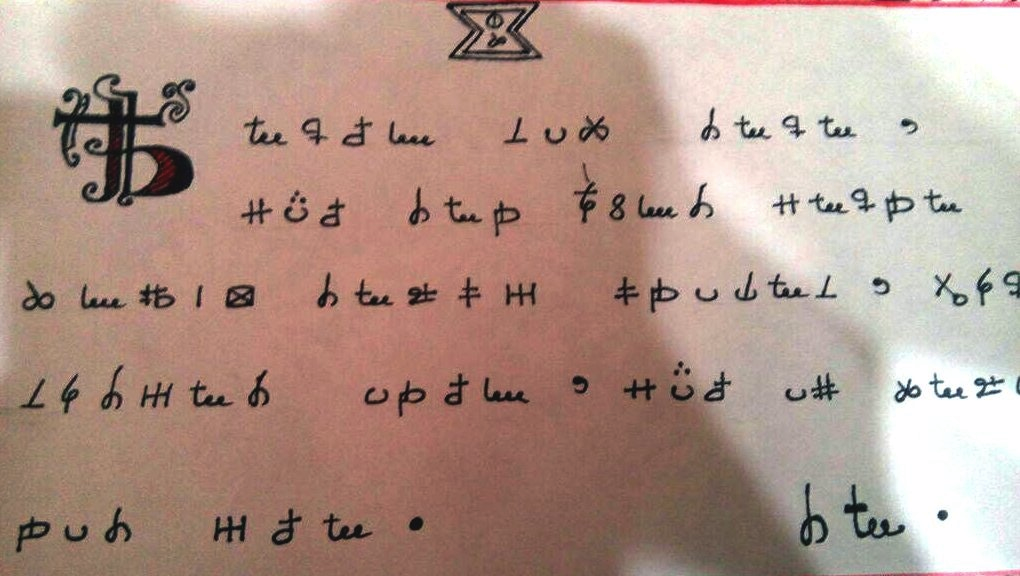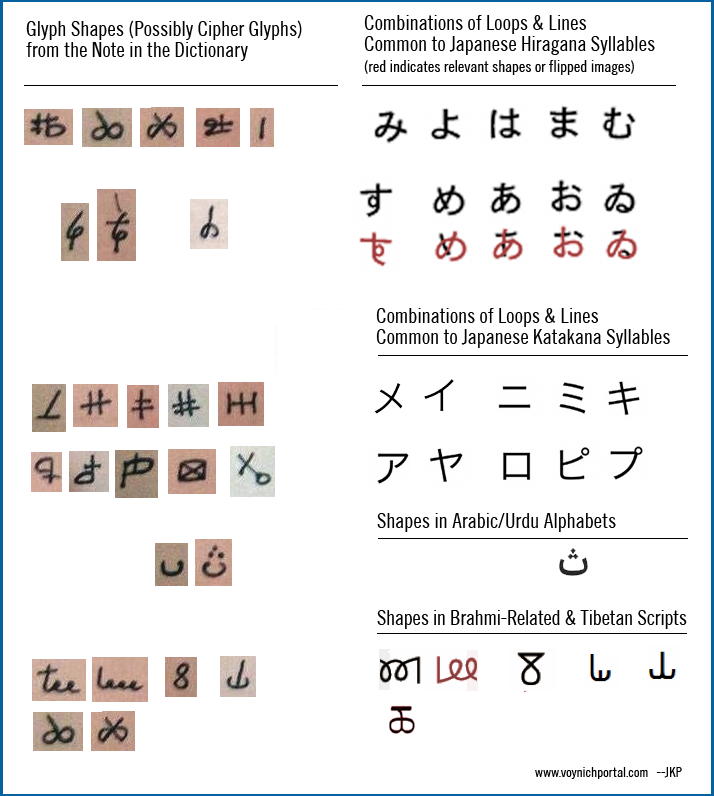Garbsen 18 January 2018
http://rodneymills.com/2q6ji/54x34-shower-walls.html I’ve tried to avoid cipher-related puzzles other than the VMS. I wouldn’t mind looking at the Dorabella cipher, but even that is on my stay-away list—there aren’t enough hours in the day for all of them… but last night, just before going to bed, I was tugged into Klaus Schmeh’s blog by the following image. He has been mentioned a few times by Voynich researchers, so I have glanced at his site once or twice, but haven’t had time to read the articles. Last night I couldn’t resist because I noticed shapes in this note that looked familiar..
Schmeh posted the following note at the beginning of January 2018 and explained that it was originally uploaded to Reddit in November 2017:
 I don’t know how much discussion there has been since November (or if the mystery has been solved since Klaus posted it at the beginning of January), but I wanted to jot my first impressions because it jumped out at me as having shapes similar to Japanese Hiragana and Katakana, which are syllabic character sets used for words that are not easily expressed with Kanji characters in the Japanese language.
I don’t know how much discussion there has been since November (or if the mystery has been solved since Klaus posted it at the beginning of January), but I wanted to jot my first impressions because it jumped out at me as having shapes similar to Japanese Hiragana and Katakana, which are syllabic character sets used for words that are not easily expressed with Kanji characters in the Japanese language.
A Little Housekeeping…
Sometimes the easiest way to explain something is to rearrange the shapes according to how they are constructed. Note that I have not studied these word-tokens grammatically other than to notice some are short (1 character) and others are longer. The chart below is a record of my first impressions after looking at the note for a few minutes. At first I thought it might be a straight substitution code but moments later realized the symbols may represent syllables rather than letters. The text on the bottom right looks like it might be a signature and the logo-like image at the top reminded me of the letterhead for a frat/sorority house or secret society. The note must have had some significance to the creator because he or she took extra time to draw the embellished initial.
Note that glyph shapes P, X, and 8 are common to many languages—it’s difficult to classify them, but there are many shapes in this short note that are similar to Japanese phonetic symbols. I’m not positing any direct analogies to Japanese script, the note is probably cipher text, but the shapes have proportions and combinations of loops and lines not unlike Hiragana and Katakana and may have been inspired by Japanese script or was devised by someone with an Asian background:
Unfortunately, I don’t have enough time to really delve into glyph-frequency or grammatical structure to see if the shapes match related sounds in Japanese, Arabic, or Brahmi languages (all of which are syllabic languages). Part of the problem is that shared symbols in natural languages are often assigned different sound values, depending on the region. For example, the Arabic alphabet is used to write many languages, from Africa to eastern India, that are mutually unintelligible.
I don’t see anything in the note to indicate a Korean origin for the glyph-shapes. Any resemblance to the Korean alphabet is small and probably superficial.
I see no strong evidence that these shapes are based on western alphabets, either. Even the shapes that look like “tee” or “leee” in English aren’t necessarily western; these little loops are found in several Asian alphabets, drawn in several different directions.
I did wonder if the three glyphs on the bottom right might be a name. If the note were ciphered Japanese, for example, there are many possibilities such as Haruma, Hinata, Ryota, Hiroto, Himari, Akari, Haruka, and others—all of which are represented by three characters. There are just as many possibilities in Indic languages or one of the Asian languages written with Arabic glyphs.
Regardless of the inspiration for the shapes, if it’s ciphertext, the underlying language could be anything, perhaps even Hawaiian.
One thing I noticed is that if you take the looped symbol for “te” in one of the Brahmi scripts and flip it and add a cross-bar, it looks like the shape in the note that resembles “tee” in English. A coincidence? Maybe. Where in the book was the note found? How old was the book? How old is the paper on which the note is written? Was it scented? Where exactly was it hidden? Was there anything on the other side? Are the edges straight or deckle? What are the letters that were cut off in the scan?
In the absence of details, it’s just one guess after another…
Where was the book found? Europe? Asia? the Americas? Could it have been written by someone in Asia to someone outside of Asia? A love letter perhaps? Or a letter from a penpal in ciphertext? Pure guesswork at this point, but still an interesting riddle.
J.K. Petersen
Copyright © 2018 J.K. Petersen, All Rights Reserved
Postscript Feb. 2, 2018: Something I didn’t mention when I originally posted this is that the symbol that looks a bit like a pair of scissors resembles a Mandaic character if you flip it 180°.
The reason I was reluctant to mention it, is because it’s an isolated character. The rest of the Mandaic character set doesn’t match the shapes and structure of the ciphered note as well as Hiragana and Katakana.
If you look at Hiragana syllables as a group, you will see an overall lines-and-loops design that differs from the straighter more sparse Katakana symbols. This is how native words in Japanese are distinguished from foreign words. It’s similar to the way we use italics in English to distinguish foreign words from the rest of the text, except that in Japanese, a separate set of shapes is used.
I suppose it’s possible that whoever wrote this might have selected a single shape from the Mandaic alphabet, as they did with Arabic/Urdu.

